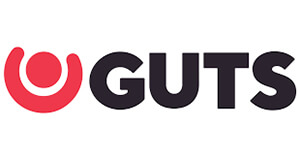Most players have some understanding of equity. In most simple terms, equity is your share of a pot.
Measured mathematically, all-in equity is the percentage of time you’d win an all-in.
For example, if AK and QQ go all-in preflop, AK wins 44% of the time and QQ wins 56%:

In other words, AK has 44% equity in the pot and QQ has 56%. Said a third way, over infinite trials, AK will win 44% of the money in the pot and QQ will win 56%.
How Realizable Equity is different from All-in Equity
Some of you are thinking: “that’s great, but the vast majority of the time you don’t go all-in”. And that’s exactly right.
Most hands in poker are played street by street, blind. Sometimes, you fold the best hand. Other times, you get a better hand to fold with a bluff. Obviously, then, your results aren’t perfectly tied to all-in equity.
What’s important in non-allin situations, then, is your realizable equity. That is, what proportion of your all-in equity you actually get to win.
Hands with significantly different Realizable Equity and All-in Equity
Hands like 55-66 are strong hands. 55-66 have 62% equity against random hands, but we often dread seeing flops, turns and rivers with these hands.
They are incredibly hard to play because overcards come that make you fold to bets and raises. You consistently worry about higher overpairs, sets, straights, flushes and two pairs. Unless these hands make sets, you are rarely confident that you have the best hand. Thus, these hands realize less than 100% of their equity.
Similarly, A2o-A6o has 57% equity against a random hand, which is a huge equity advantage. If you hit your ace or your kicker, you generally win an all-in. In multi-street pots, however, you always worry about better kickers, higher pairs when facing aggression.
On the other hands, 87s-JTs have only 52.5% equity against random hands. Yet, these are relatively standard opens even in UTG while A2-a6 are definite folds. Why are suited connectors so good?
Generally, suited connectors realize more than 100% of their equity. You make better hands fold on boards where you have draws to semi-bluff on. When these hands hit, they make hidden trips, two pairs, straights, flushes that make nutty hands.
Other factors that affect Realizable Equity
Position is a major factor in Realizable Equity. Position allows you to act with more information, to close the action or to ensure bets go in. Being in position increases your realizable equity significantly, while being out of position lowers it.
Having the initiative is another major factor in realizable equity. Being able to 2-3 barrel with hands like suited connectors significantly increases your ability to semi-bluff and make better hands fold, increasing your realizable equity.
Finally, skill is a factor in realizable equity. The better player realizes a significantly higher fraction of his/her equity than the weaker player























